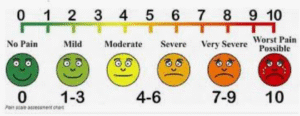How Many Stages of Fibromyalgia Are There and What They Mean
How Many Stages of Fibromyalgia Are There? Understanding the Chronic Journey
Fibromyalgia is a complex and often misunderstood chronic condition that affects millions of individuals worldwide. It is characterized by widespread musculoskeletal pain, fatigue, sleep disturbances, and cognitive challenges. While not officially divided into medically standardized stages like some diseases, many patients and healthcare professionals recognize a practical, experience-based progression of fibromyalgia symptoms. Understanding these stages can help patients identify their condition’s trajectory and find effective management strategies at each point along the journey.
Stage 1: Subtle Onset and Early Symptoms
The earliest stage of fibromyalgia is often difficult to diagnose. Symptoms may be mild and intermittent, with individuals experiencing:
- Occasional body aches without obvious cause
- Unexplained fatigue even after rest
- Difficulty concentrating or forgetfulness
- Mild sleep disturbances
At this point, many people may dismiss these symptoms as signs of stress or a temporary issue. It is common for individuals in this phase to go undiagnosed, especially when symptoms do not significantly disrupt daily activities.
Stage 2: Persistent Symptoms and Growing Awareness
During the second stage, symptoms become more noticeable and persistent. Patients may begin to seek medical advice as they realize their discomfort is not going away. Common experiences in this stage include:
- Constant pain in specific areas such as the neck, shoulders, or lower back
- Increased sensitivity to temperature, noise, and touch
- Morning stiffness and muscle tightness
- Sleep problems that result in chronic tiredness
At this point, many individuals receive a fibromyalgia diagnosis. Recognition often leads to a mix of relief and frustration, as the condition becomes better understood but also more impactful on quality of life.
Stage 3: Flare-Ups and Functional Impairment
In this stage, the disease begins to affect multiple areas of life. Flare-ups can become more frequent, with pain and fatigue intensifying. Activities that were once routine may now require additional effort or support. Symptoms may include:
- Widespread pain and soreness across the body
- Severe fatigue that affects daily function
- Cognitive dysfunction often referred to as fibro fog
- Gastrointestinal issues and irritable bowel syndrome
- Emotional impacts such as anxiety and depression
This stage often prompts lifestyle adjustments. Individuals may reduce work hours, require help with household tasks, or begin trying alternative therapies alongside traditional medications.
Stage 4: Lifestyle Redefinition and Management
At this stage, the condition may become a defining part of daily life. Most individuals have found some combination of treatments, therapies, or coping mechanisms that help reduce the impact of fibromyalgia. Common characteristics of this stage include:
- Acceptance of chronic illness and long-term symptom management
- Use of medication, physical therapy, diet, and mind-body practices
- Adjusted work and social life based on energy levels
- Awareness of flare-up triggers and proactive lifestyle choices
Many patients develop a strong sense of self-awareness and body literacy. With supportive care and careful planning, it is possible to lead a fulfilling life, even with persistent symptoms.
Stage 5: Advocacy and Integration
The final stage is not experienced by everyone, but for many, it represents a sense of mastery over the condition. Patients in this stage often become advocates or mentors for others, offering insights and encouragement. This phase includes:
- Minimal disruptions from symptoms due to effective routines
- Deep understanding of personal triggers and needs
- Engagement in community support groups or educational efforts
- Focus on emotional and mental well-being
Although the condition remains, individuals in this stage often feel empowered. Rather than being controlled by fibromyalgia, they integrate it into their life in a manageable and balanced way.
Does Everyone Progress Through These Stages?
Not all individuals with fibromyalgia experience these stages in a linear fashion. Some may skip certain phases, while others may move back and forth between them depending on stress, health changes, or life events. These stages are a conceptual guide rather than a clinical diagnosis, helping people understand the dynamic nature of the condition.
Conclusion
So how many stages of fibromyalgia are there? While not officially recognized in medical texts, the experience-based progression suggests five stages. Each represents a unique set of challenges and milestones, from early confusion to eventual mastery. Understanding these stages allows individuals to better prepare, seek appropriate care, and maintain hope. With the right support and knowledge, people living with fibromyalgia can adapt and thrive at every stage of their journey.



